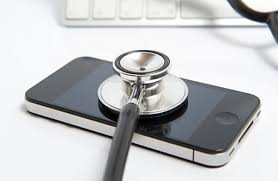Supermarket trolleys might just hold the key to saving lives by aiding in the diagnosis of atrial fibrillation, a condition that, if left untreated, can lead to debilitating or fatal strokes.
The findings of a recent study on this novel approach were presented at the ACNAP 2023, a scientific congress organized by the European Society of Cardiology (ESC).
Professor Ian Jones from Liverpool John Moores University in the UK, the study’s lead author, highlighted the potential of this method in providing health checks to the masses without disrupting their daily routines.
Over a period of two months, the study identified 39 individuals who were unaware that they had atrial fibrillation. By identifying these individuals, the study helped facilitate timely cardiologist appointments, reducing their risk of stroke.
Atrial fibrillation is the most common heart rhythm disorder, affecting over 40 million people worldwide. The condition increases the risk of stroke by five-fold, often with severe consequences.
While anticoagulation therapy can significantly reduce the risk, many people remain unaware of their atrial fibrillation until they experience a stroke. Hence, there is a need for screening programs to identify individuals with the condition and provide preventive measures.
The SHOPS-AF study aimed to assess the effectiveness of integrating electrocardiogram (ECG) sensors into the handles of supermarket trolleys to identify shoppers with atrial fibrillation.
During the two-month study, ten trolleys were equipped with sensors and deployed across four supermarkets in Liverpool, each with an in-store pharmacy.
Shoppers were requested to use the modified trolleys and hold the handlebar for at least 60 seconds. If the sensor did not detect any irregular heartbeat, it illuminated in green, indicating a normal result.
These participants then underwent a manual pulse check by a researcher to confirm the absence of atrial fibrillation. In case of an irregular heartbeat, the sensor lit up in red. The in-store pharmacist then conducted a manual pulse check, followed by another sensor reading using a separate standalone device while the participant remained still.
The ECG recordings of participants with a red light and/or irregular pulse were reviewed by the study cardiologist. Participants were promptly informed of the results, which could indicate: 1) no atrial fibrillation detected; 2) an unclear ECG, with an invitation to repeat the measurement; or 3) confirmed atrial fibrillation, necessitating a cardiologist appointment within two weeks.
- Eurekalert







